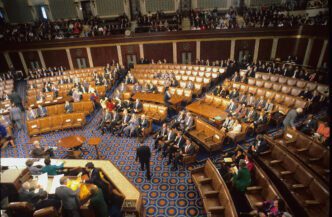Executive Summary
The Story So Far
Why This Matters
Who Thinks What?
A proposal from the Trump administration for 50-year mortgages is emerging as the latest solution to combat the ongoing affordability crisis, despite warnings from financial experts about the potential for consumers to incur significantly more debt. The suggestion, which would extend the traditional mortgage term, comes as Americans grapple with persistent inflation and rising costs of living. The analysis by Elisabeth Buchwald, published on November 12, 2025, highlights a broader trend toward longer-term debt solutions.
Longer Debt Terms Emerge Amidst Affordability Crisis
Bill Pulte, director of the Federal Housing Finance Agency, described President Donald Trump’s 50-year mortgage proposal as a “complete game changer” on X over the weekend. However, the analysis suggests this change may not be beneficial for many Americans, potentially leading to deeper financial entanglements.
The concept of extended loan terms is not new, with the auto industry increasingly offering seven-year car loans as new vehicle prices surpass $50,000. Additionally, the proliferation of buy now, pay later (BNPL) options has normalized longer-term debt for everyday purchases, including food delivery.
While these offerings provide immediate relief from financial anxiety, experts caution they can severely damage a consumer’s long-term financial stability. For instance, a 50-year mortgage could lower monthly payments but might double the total interest paid compared to a traditional 30-year term at current rates.
Matt Schulz, chief consumer finance analyst at LendingTree, advises against longer-than-usual loan terms due to the risk of owing more on an asset, like a car, than its actual worth. He also noted that with an average American life expectancy of around 80 years, individuals would need to secure a 50-year mortgage by age 30 to potentially see its full benefits.
Exploding Consumer Debt and Delinquencies
Amidst these new debt options, all major forms of consumer debt in the U.S. have reached record highs, according to a recent report from the New York Federal Reserve. Americans are currently shouldering an unprecedented $18.6 trillion in debt, marking a 3.6% increase from the previous year.
Credit card debt alone has surged by nearly 6% year-over-year, hitting a record $1.2 trillion. The rate of consumers entering serious delinquency—defined as being at least 90 days late on a payment—rose to over 3% in the third quarter of this year, the highest level in more than a decade.
Student loan payments are particularly stressed, with over 14% becoming seriously delinquent last quarter, the highest recorded level since the New York Fed began tracking this data in 2004. This widespread financial strain has contributed to credit scores falling by the most this year since the Great Recession, making new or existing debt more expensive for borrowers.
The Importance of Ownership
Homeownership has historically been considered a cornerstone of the American dream, largely due to its role in wealth creation. Property values tend to appreciate over time, providing a significant asset that can be leveraged later in life for retirement or other financial needs.
Beyond wealth building, homeownership offers tax advantages, such as the ability to deduct mortgage interest payments, which can reduce an individual’s overall tax burden. Schulz emphasized that homeownership has been one of the most accessible ways for average individuals to build wealth.
However, the current high home prices and mortgage rates have made homeownership increasingly challenging for many, leading to a pause in what was once a straightforward financial decision for many Americans.
While innovative solutions like extended loan terms offer immediate relief from the high cost of living, experts warn that they could deepen long-term financial burdens for American consumers, exacerbating the broader debt crisis.








